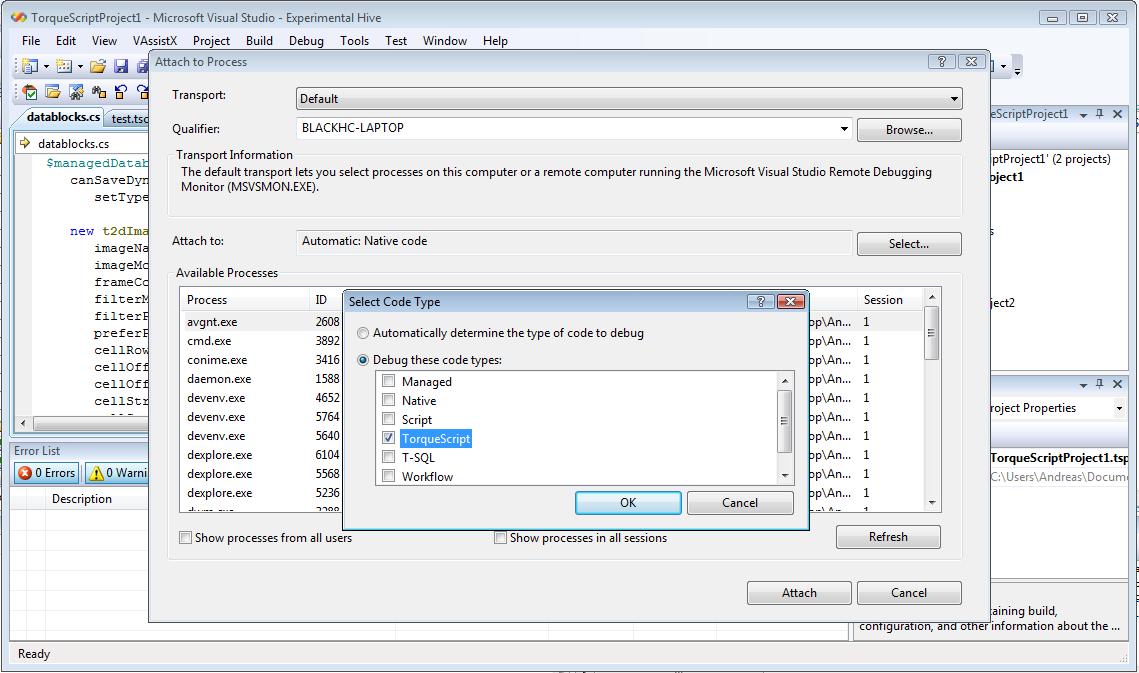Small update: After hours and hours of error and trial (and implementing a few interfaces by using Copy&Paste wisely), I’ve finally managed to get Visual Studio to load my debug engine.
This looks gorgeous, doesn’t it?

A few notes for those interested in writing Debug Engines:
See my previous post for the ProvideDebugEngine helper attribute
There exists a really nice managed debug engine example, that isn’t part of the SDK. You can find it here.
You are required to set a PortSupplier, even if the documentation says otherwise (this was a major source of frustration in the last hour).
Since _ProvideDebugEngine_requires a Type for PortSupplier, I’ve been using this stub class:
/// <summary> /// The class is just a stub for use with ProvideDebugEngine. /// It seems it's mandatory to provide a PortSupplier GUID with a debug engine. /// </summary> [Guid("708C1ECA-FF48-11D2-904F-00C04FA302A1")] internal sealed class DefaultPortSupplier { }I’ve also added another attribute (ProvideClass) for convenience to register a class directly (it’s the same as using ProvideObject on the current class type).
Since the code is quite short, I’m going to provide it here directly:
using System;
using System.Collections.Generic;
using System.Linq;
using System.Text;
namespace Microsoft.VisualStudio.Shell
{
/// <summary>
/// This is just a wrapper for ProvideObject to provide the class the attribute is used on
/// </summary>
[AttributeUsage(AttributeTargets.Class, AllowMultiple = false, Inherited = true)]
class ProvideClass : RegistrationAttribute
{
public override void Register(RegistrationAttribute.RegistrationContext context)
{
ProvideObjectAttribute objectProvider = new ProvideObjectAttribute(context.ComponentType);
objectProvider.Register(context);
}
public override void Unregister(RegistrationAttribute.RegistrationContext context)
{
ProvideObjectAttribute objectProvider = new ProvideObjectAttribute(context.ComponentType);
objectProvider.Unregister(context);
}
}
}Cheers,
Andreas